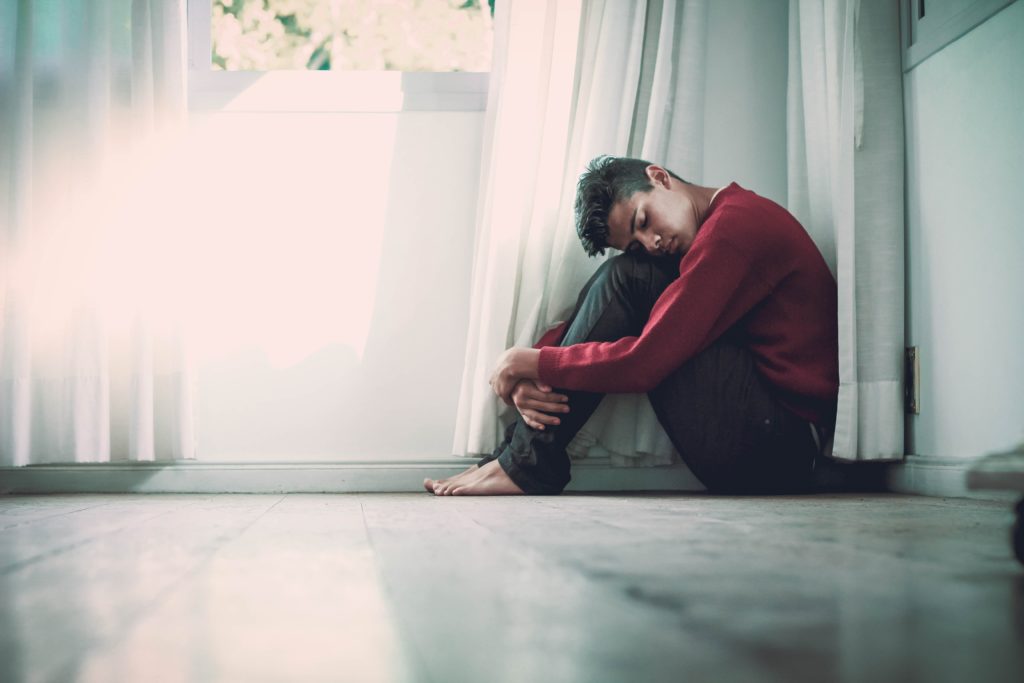A toddler is having one last play before bed. It’s summertime, and the bedroom window is open to the balmy air.
Three moths come flying in. At first, they don’t bother the toddler too much, but after a while they start to irritate them. They decide to find Mum and ask her to get rid of them.
The toddler goes to the door and accidentally pushes it closed. The door handle looks very far away. They jump up to grab it, but end up knocking the light switch. The toddler is now trapped and in the dark with the moths.

According to Dr Ross King, an academic and clinical psychologist from Deakin University’s School of Psychology, one of the main ways people can develop phobias is through traumatic experiences. In the right circumstances, seemingly harmless objects can become a source of debilitating anxiety. In the case of the toddler, Dr King says the child could develop a phobia of moths because their existing fears of being trapped and in the dark have been paired with the insect, despite the fact that they were not harmed in any way by them.
Another common way people can develop phobias is by observing someone else’s fear of an object or situation and learning that they, too, should be afraid.
“Someone may develop a fear of dogs if they realise their parent is fearful of dogs,” Dr King says. “It’s a basic evolutionary sense; my parent is afraid of this, so I should be afraid of this as well.”
Phobias can also develop through what Dr King refers to as “informational”, or media ways.
“There are many people who have a fear of snakes,” he says, “but most of them have never seen one, let alone had a negative encounter with them. They haven’t seen someone get bitten by a snake, but they’ve seen depictions of snakes in threatening poses.”

The same could be said for a fear of flying; it’s possible to develop this phobia (or rather, feeling too distressed to catch a plane in case it fails mid-flight) after being exposed to enough media coverage of a plane crash.
Approximately nine per cent of people have a specific phobia. There is evidence to suggest that specific genetics may somehow be involved; generally speaking, if a person has an animal phobia their parent will most likely have an animal phobia too, although they will not necessarily be afraid of the same animal.
“Blood, injury and injection phobia has a very strong genetic basis of around 70 per cent,” Dr King says. “Therefore, someone with this phobia will have many relatives who have this same fear.”
He adds that the genetic link may stem from an evolutionary advantage. When we experience fear, our blood pressure rises. Someone with blood, injury and injection phobia will experience this rise, immediately followed by a sudden drop.
“If you’re a cave man walking along, and a sabre-toothed tiger comes and bites you on the arm, you may survive if your blood pressure goes down because you’re not going to lose all the blood,” he says.
And although some of us may feel a bit wobbly at the sight of blood, that doesn’t necessarily mean we have a phobia.
“We need to make a distinction between what might be a feeling of discomfort around something, as opposed to a true phobia where the person has a high level of anxiety.
“The key thing about a phobia is that it gets in the way of a person’s life. A person might have a fear of enclosed spaces. They may take the stairs instead of using the lifts at work, and that’s okay. But if they can’t even reach into a cupboard at home without feeling anxious, then it’s more problematic,” Dr King says.

“The good thing is that we have treatments and can help people.”
A common way to treat phobias is through exposure therapy. Traditionally, the individual will gradually work their way up to confronting their phobia from the least anxiety-inducing way to the most. Someone who has a fear of spiders may begin by looking at a black and white drawing of a huntsman before going anywhere near a live specimen. Dr King has used this method to treat people with a range of phobias such as specific animals, heights, and thunder storms.
In addition to this, the individual is taught to only confront their phobia after they’ve taken a few deep breaths and are in a relaxed state, something incompatible with their anxiety. For cases of blood, injury and injection phobia, Dr King says that tensing the body’s muscles in a specific way is used in the exposure therapy to counteract the dramatic drop in blood pressure. From his experience, this can be very effective.
“They’re being counter-conditioned, replacing one reaction with another,” he says.
In the past, Deakin has used virtual reality to simulate scenarios to be used in exposure therapy. The individual’s phobia stimulus can be precisely controlled to what they’re willing to experience and can gradually be increased from there.
But why face your fears, even if they aren’t impacting your life in a particularly debilitating way? Dr King says that, in addition to tackling the anxiety, exposure therapy also aims to disprove beliefs that a person may have about themselves or a phobic stimulus.
“A lot of people think that the spider will jump at them, or that they’re more vulnerable to falling than other people. The exposure disconfirms these beliefs.”
He points out that the desired outcome isn’t necessarily to cure the individual of their phobia.
“We’re trying to decrease their levels of distress and impairment. Say that you’re fearful of dogs; you may still feel a bit tense about encountering dogs, but you’re no longer spending ten minutes in your front window checking to see if there are any Dobermans before going out to your car.
“You don’t have that high anxiety like you used to, which would prevent you from doing that. That’s a good outcome for many people.”
Melina Bunting
Staff writer



